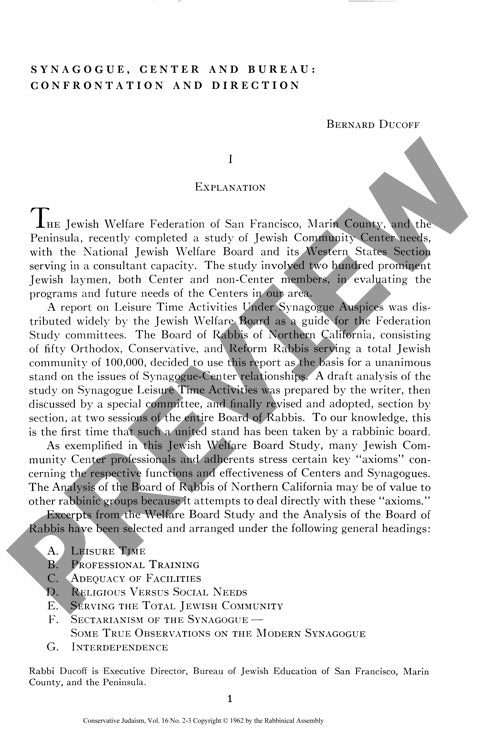Synagogue Center and Bureau Confrontatio
Couldn't load pickup availability
A 1960s confrontation between San Francisco's Jewish Community Centers and local synagogues exposed deep tensions over institutional roles that continue to shape American Jewish communal life. When the Jewish Welfare Federation released a study on Community Center needs, the Board of Rabbis of Northern California issued a unanimous challenge to its core assumptions about synagogue-center relationships. Through comparative analysis of the Welfare Board Study and Rabbis' Analysis across seven domains - leisure programming, professional training, facility adequacy, religious versus social needs, community service scope, synagogue sectarianism, and institutional interdependence - fundamental philosophical differences emerged. The rabbinical response contested claims that synagogues were inadequately equipped for leisure activities and challenged centers' assertions of serving the "total Jewish community" while maintaining membership restrictions. Analysis revealed competing visions regarding professional qualifications, resource allocation, and institutional mission. Jewish Community Centers proved most effective when functioning as service agencies rather than competing membership organizations, working cooperatively with synagogues and Bureaus of Jewish Education to provide comprehensive programming integrating spiritual, educational and social needs. The findings demonstrate that sustainable cooperation requires centers to transform from autonomous membership organizations into communal service agencies that strengthen rather than compete with synagogue-based Jewish life, recognizing the synagogue's primary role in connecting Jewish families to their community.

More Information
-
Physical Description
-
Publication Information
Published 1962
ISBN
-
Publication Credits
Bernard Ducoff

